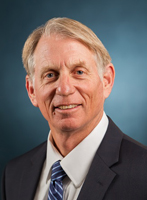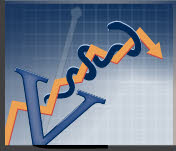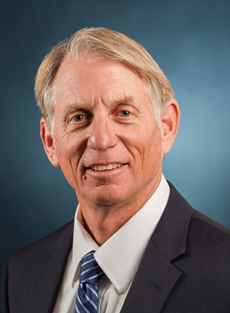
Dicks commentary bug

I started studying the economics of the veterinary profession six years ago by reviewing all available past studies of the veterinary workforce. I wanted to know what had been analyzed previously and what actions resulted from the findings.
What struck me most was the absence of continuous data collection and analysis. In other words, the profession lacked economic data-analytics. Each of the workforce studies was done independently and in isolation. Once completed, there ended the study of the economics of the profession, at least until the next one.
That changed in 2012, when the American Veterinary Medical Association hired me to lead a sustained effort to annually measure the economic performance of the profession and assess the factors contributing to its performance.
Based on my years of study, and considering the findings from past workforce studies, this is my conclusion: The veterinary profession is not performing to the expectations of veterinarians and their clients.
Michael R. Dicks 288

Photo by Scott Nolan
Michael R. Dicks directed the American Veterinary Medical Association Veterinary Economics Division from 2013 to 2018.
The profession has at least six major problems:
- Ethical stress surrounding treatment decisions
- Financial stress among associate veterinarians and practice owners alike
- The takeover of veterinary practices by non-veterinary owners who are motivated chiefly or solely by profit
- Volatile labor markets
- Increasing barriers to patient care
- Absence of continuous, profession-wide data analytics to help identify solutions
These issues have persisted since at least the year 2000, yet there has been no profession-wide effort to address them.
Lack of improvement in the performance (financial and emotional) of the profession is evidence that the processes and institutions — all the entities whose job is to address problems of the profession and whose actions are critical to effecting change — are not working. To be sure, there are various groups and individuals working for change. But the profession needs a large, coordinated plan to move forward.
I have written at length about the economics of the veterinary profession during the past six years, starting with A Short History of Veterinary Workforce Analyses and continuing with numerous articles and reports that analyze the above-listed problems, their causes, their implications and strategies to mitigate them. The message I hoped readers would hear and act upon is: The profession needs evidence-based change that is led by veterinarians.
Letters

But while my involvement was with one of the most prolonged, comprehensive and aggressive analyses of the economics of the veterinary profession ever undertaken, the results to date are no more impressive than those of past workforce studies. The problems still exist; none of the studies had an impact.
To borrow the words of Douglas Hofstadter, a cognitive scientist and author of the book I Am a Strange Loop: "It sometimes feels as if I had shouted a deeply cherished message out into an empty chasm and nobody heard me."
I'm sure some veterinarians and others in the animal health industry have heard and begun acting on the message. But as noted before, the effort is not collective. One of my failures in this regard was an inability to get the message into the hands of all veterinarians for action. More importantly, the data my team and I collected and analyses we produced are available, but veterinarians on the whole have not integrated economics into their daily practices, and no one has executed an outreach program to help them do so. (For large corporate enterprises, meanwhile, incorporating economic data is second nature.)
Looking at the veterinary profession as my patient, taking a patient history, running numerous diagnostics, reaching a diagnosis and creating a treatment plan, I failed to get the client to accept and implement the treatment.
Where is the profession today? Where is it headed? I have been obsessed with these two questions for the last couple of years. Now, as I have exited my role as chief economist for the AVMA, I offer this commentary series as a summary of my analysis. In the next seven articles, I dive into specifics of the common practices and problems as I see them, and suggest strategies to improve the profession's economic health.
I persist in trying to get the message out because I believe the profession cannot afford to do nothing, as it has in the past. The current situation is more urgent. The ability of veterinarians as a whole to make internal adjustments that will build the future they want is quickly disappearing. As non-veterinary funded corporate entities expand their ownership of veterinary hospitals, their influence over how veterinary medicine is practiced will grow. These entities increasingly will shape the educational process, animal health and welfare legislation, the market for veterinarians and the delivery of services.
Outmoded ways
Many of the veterinary profession's fundamental systems, business models and practices — its customs and culture — no longer meet the needs or expectations of veterinarians, clients or the communities they serve. Student debt that is exponentially higher than in previous generations impacts where today's graduates practice, what field of veterinary medicine they choose and what standard of living they will be able to attain. For many new graduates, this challenge makes it difficult, if not impossible, for them to realize the dream they had since childhood.
The rising cost of education also impacts pet owners. Veterinarians with heavy school debt cannot afford to practice in lower-income communities or offer certain health-care services at prices that less affluent clients are willing or able to pay. Consequently, services such as nutrition consultations, behavior consultations and reproductive services are left to non-veterinarian providers who charge lower rates than a licensed professional would. Pet owners end up integrating health-care information from a variety of sources instead of having the veterinarian, the best-trained person for the job, do that for them. In addition, lack of veterinary services leaves communities vulnerable to zoonotic and enzootic diseases.
One contributor to the profession's challenges is that economics and finance have never been in its wheelhouse. I knew coming in that integrating these concepts would be difficult. A transformation of the magnitude that I believe is necessary requires vision, profession-wide outreach, collaboration and leadership.
A noteworthy example of a visionary approach is the Stanton Foundation's effort to shift the veterinary profession from the concept of "standard of care" to "spectrum of care," and the Access to Veterinary Care Coalition's focus on improving affordability of veterinary care. Spectrum of care refers to offering clients a range of diagnostic or therapeutic options for a patient. Development of the options is guided by many factors, including the veterinarian's knowledge and skillsets, current scientific evidence for safety and efficacy, practice guidelines, cost, and — most notably — the owner's goals, values, resources, and willingness and ability to comply.
The veterinary profession has risen to the challenge of society's changing needs before. In the early 1900s, when the automobile replaced the horse, the role of the veterinarian had to be reinvented. The profession is standing at an equally significant crossroads now.
While it ponders "What is the role of the veterinarian in tomorrow's society?" a more pressing question may well be "Who will decide what the veterinarian's role will be?"
Next: Inertia in the veterinary profession
About the author: Michael Dicks, PhD, established the veterinary economics division of the American Veterinary Medical Association in 2013 and was its director until 2018. Dicks earned a BS in biochemistry and animal science from California Polytechnic State University, taught chemistry as a Peace Corps volunteer in Kenya, then completed a master's and a doctoral degree in agricultural economics at the University of Missouri. He was employed by the U.S. Department of Agriculture Economic Research Service for five years before joining the faculty at Oklahoma State University, where he spent nearly 24 years prior to his stint at the AVMA.